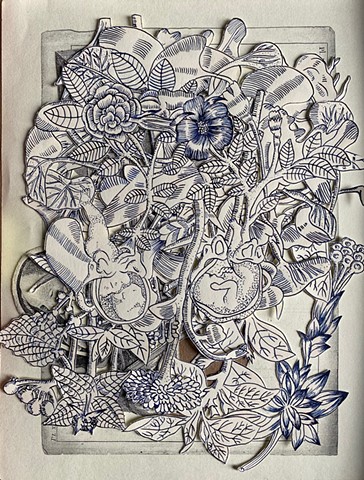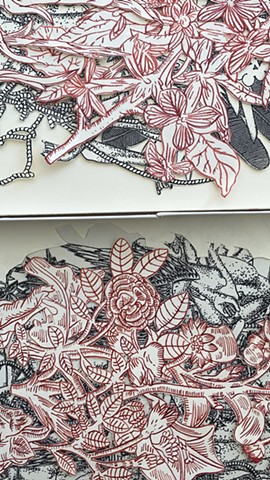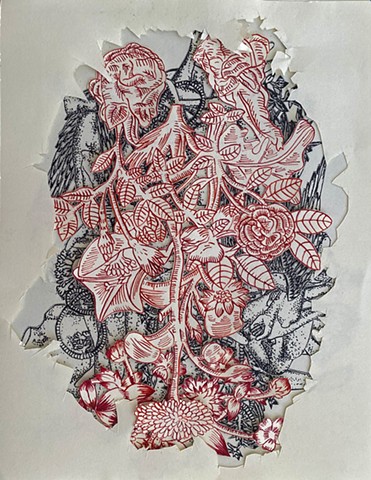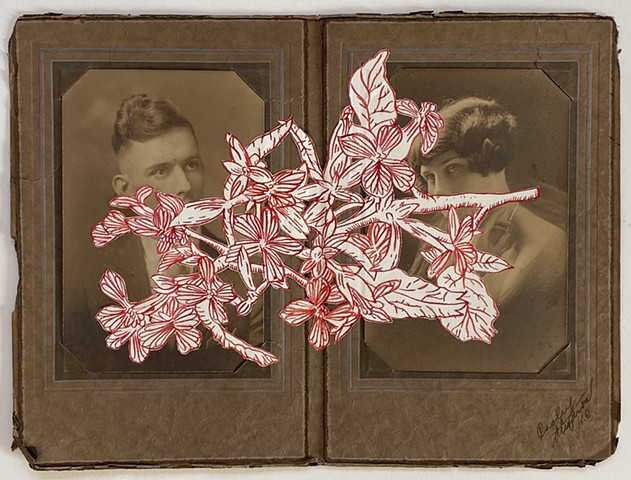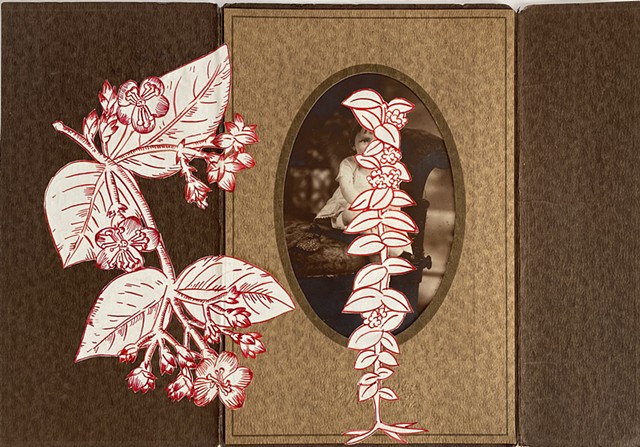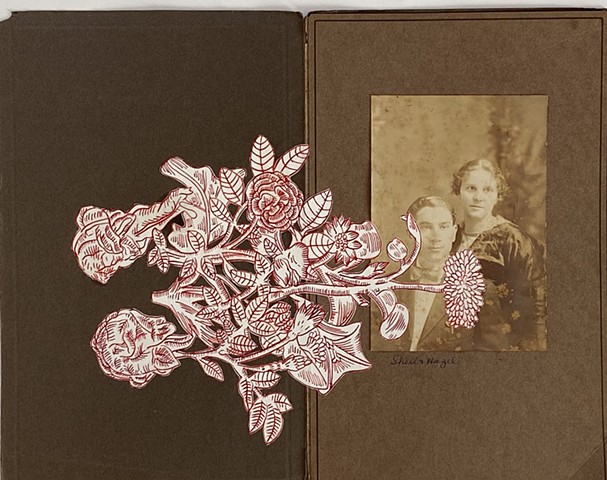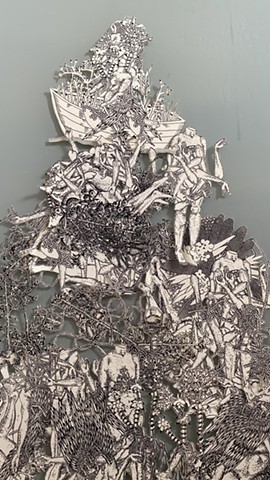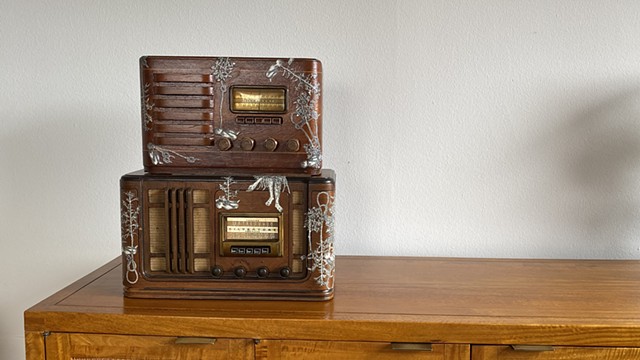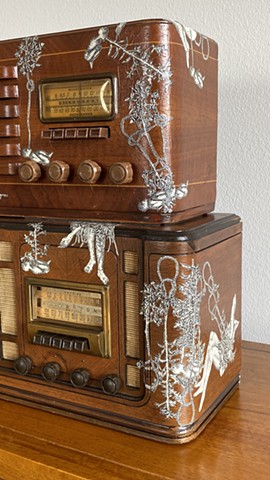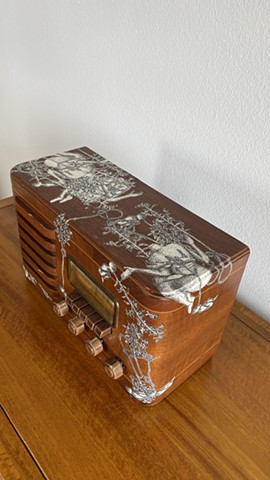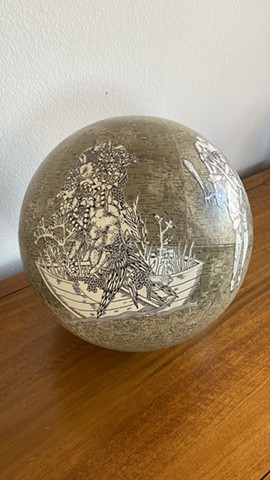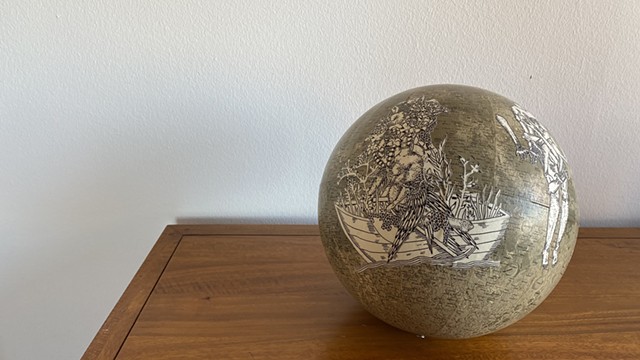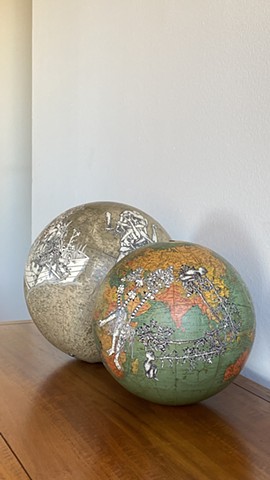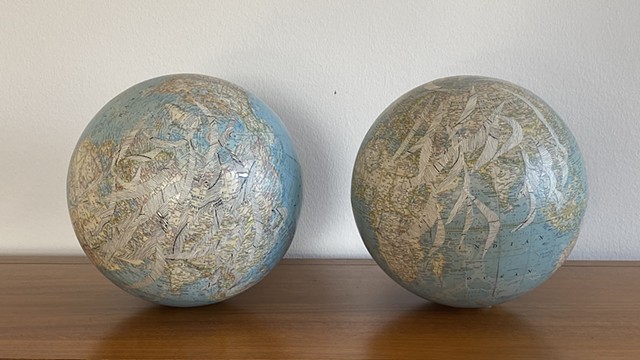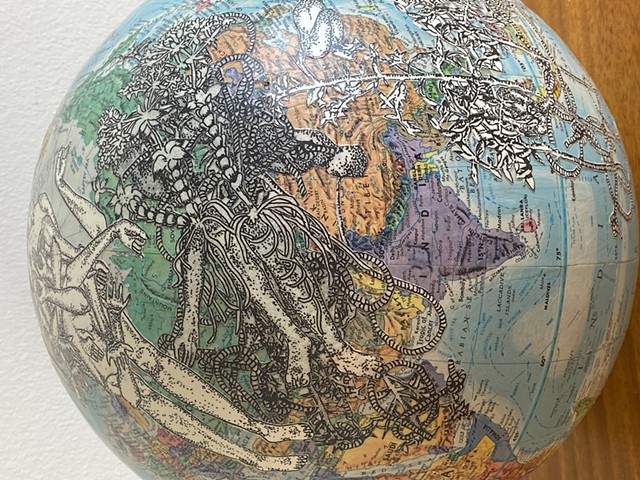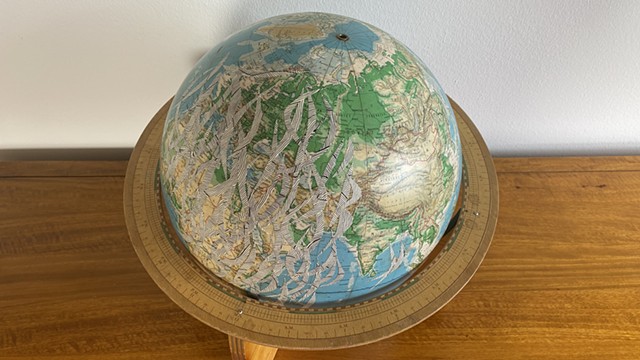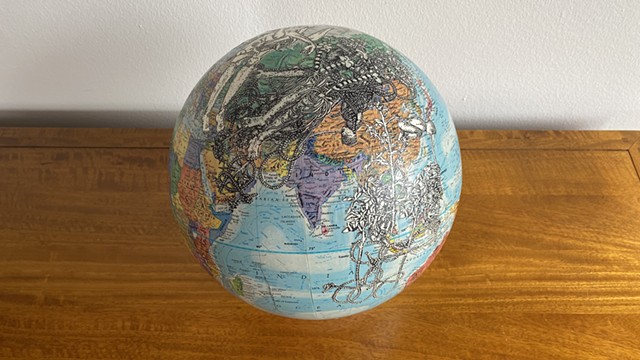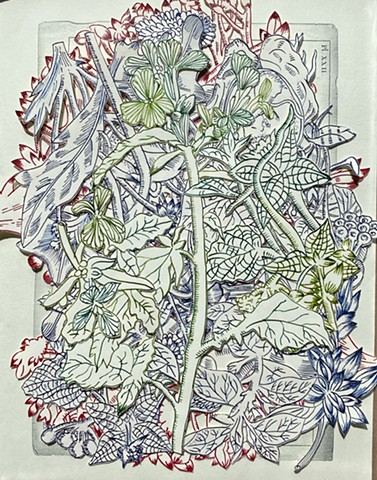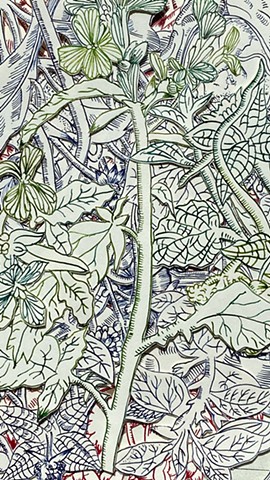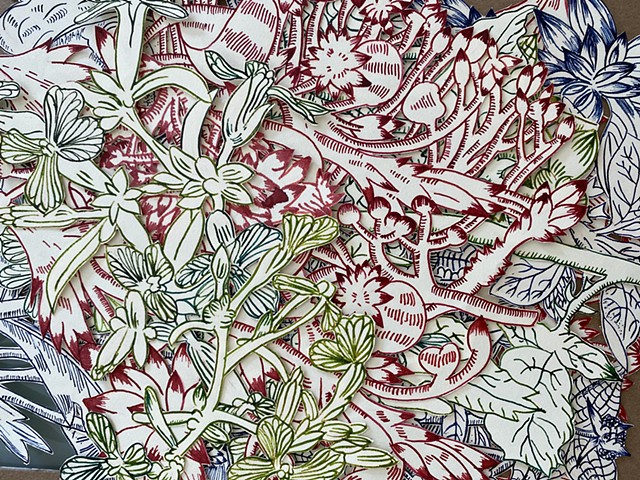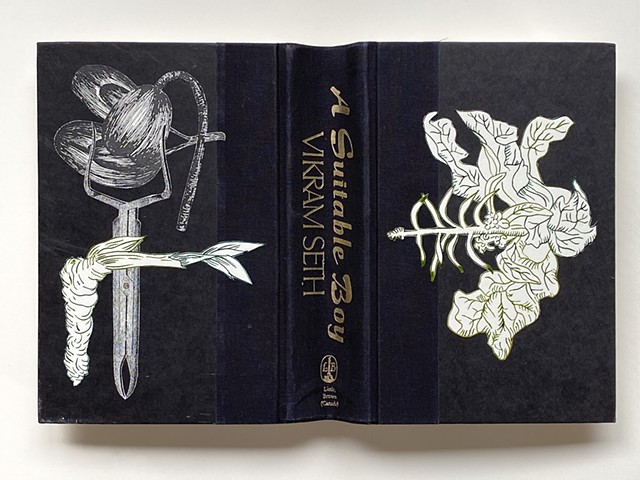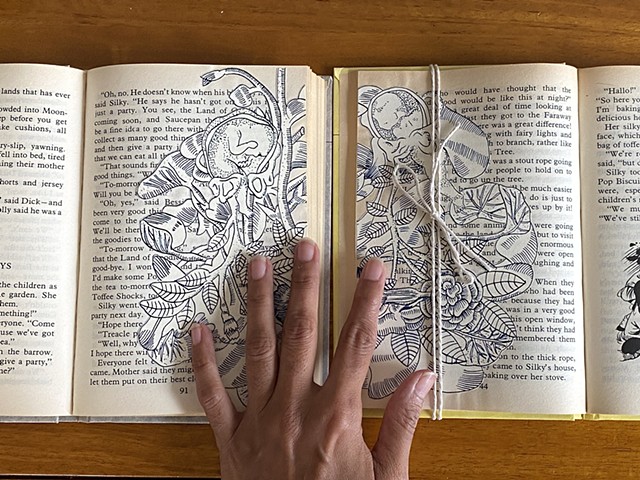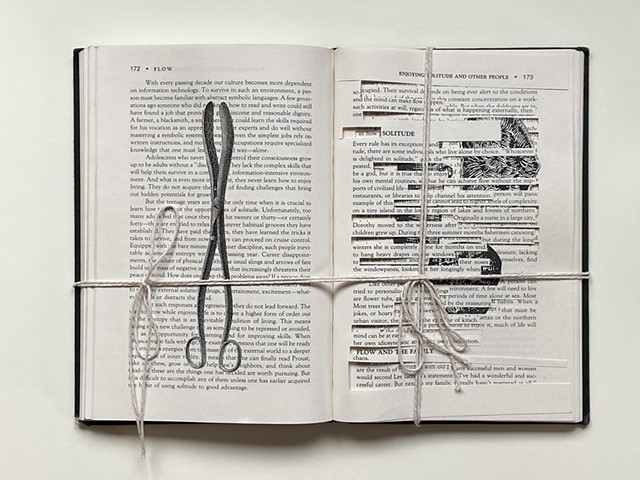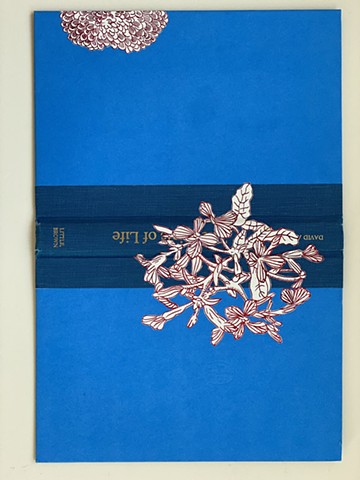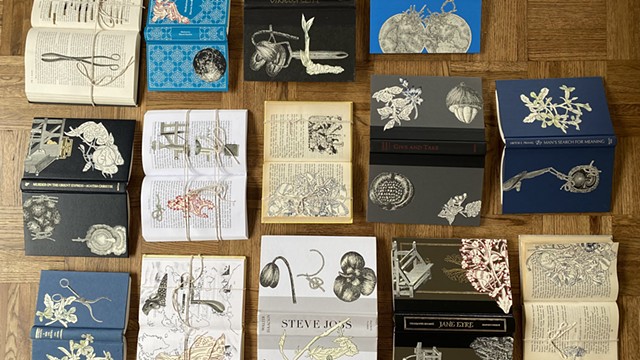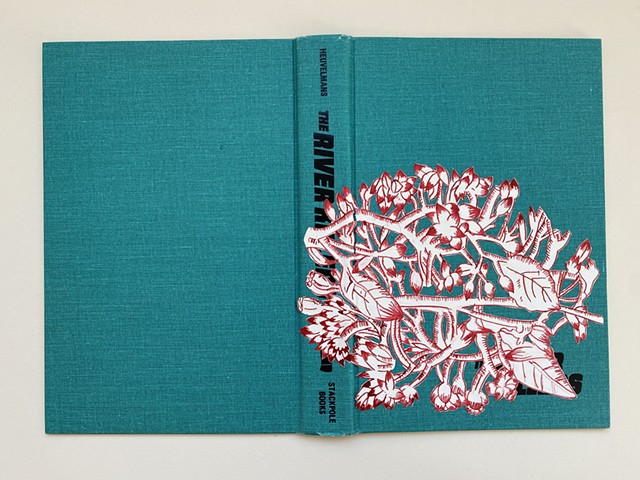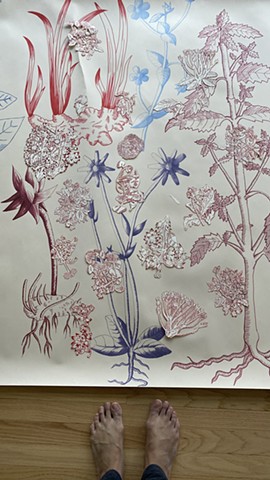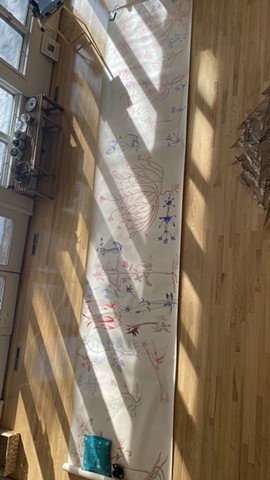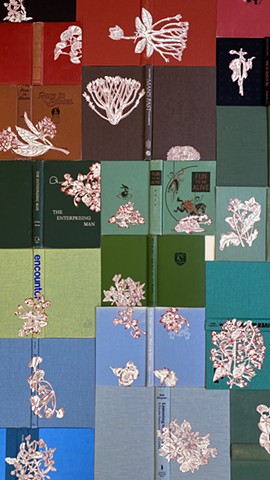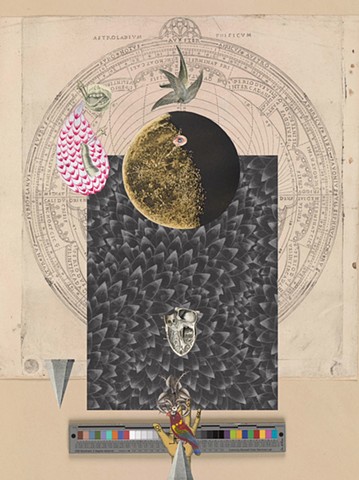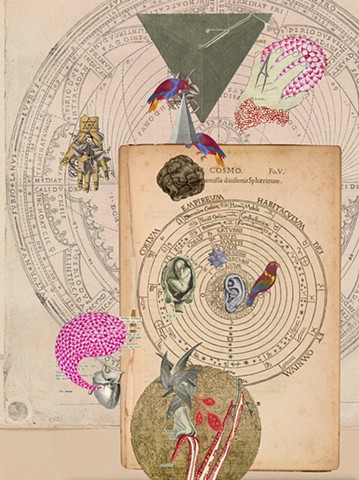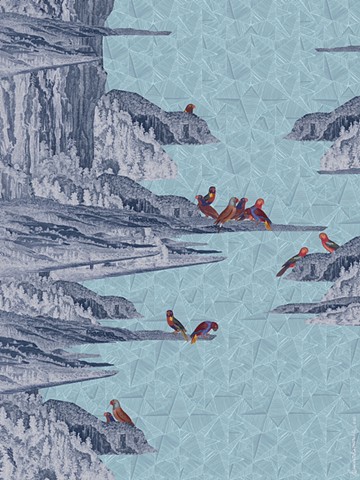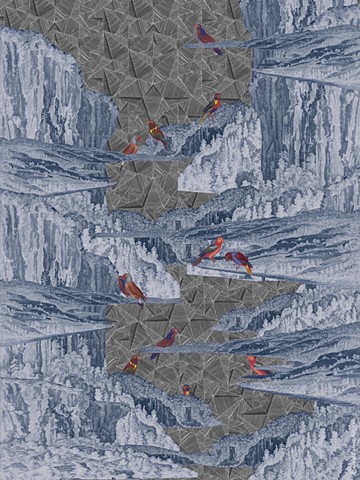Pilgrim, Saint, Scholar, Sinner
United by a sense of shared anxiety, grief, fear, hope and resilience, the global pandemic highlighted our connection yet also kept us apart. These works variously explore themes relating to separation, isolation, longing and belonging in these difficult times.
Art-making is a space to articulate feeling states that are unconscious and are yet unnamed, but the act of mark-making, image creating and sharing feels healing and purposeful. Art allows for joy and pleasure, and possibilities to emerge. It is a meditative state, that when I draw, the ink becomes my blood, the pen my arm, the flesh my drawing. This dance between inner and outer, pen / arm / blood / flesh / drawing cannot belong to either side completely. It is one which psychoanalyst Donald Winnicott, in his seminal work, 'Playing and Reality' has termed “the intermediate experience which has to do with living experience and which is neither dream nor object relating” and “at the same time it is neither the one nor the other of these two it is both”.
Art is a language for a felt experience for which words would come later. It is a way of knowing, loving, being, living, and working through trauma all at once so each breathing day is saturated with more life and play. Art helps crystalize another kind of intermediate area of experiencing, i.e. the psychic and physical state of being both from here and from there and also not being from here or there.
* *
The old maps, antiquarian books, vintage photographs, and other objects that I collect and repurpose in my work, enliven once again the fragments of memory of my childhood home, childhood fantasy and also the trauma of displacement and longing. These used, discarded, forgotten things I collect with their own histories held deeply within, are reflective of perhaps my inner object relation and an attempt to construct and work through a reimagined history?
In his book, ‘Being a Character’, psychoanalyst Christopher Bollas, writes, “...an object is part of a psychosomatic lexicon, so that it can be used sensationally structurally conceptually, symbolically, mnemically, and projectively to provide for a syntax for self experience”. For me, maps and globes stand as a metaphor for exploration, journeys, possibilities, but also, the un-tethering from a land (that exists only frozen in sentimental memory). Moving home entails newness and adventure, but also loss, of community, culture, language. In his essay, On Being Left Out, this line in the opening paragraph that psychoanalyst Adam Phillips writes of Kafka’s inner conflict, deeply resonated with me, “….being left out. It is a feeling of being alien, or strange, or unable to participate.” It is a kind of emotional and psychic dis-embodiment of feeling fragmented.
If emigration entails loss, what becomes dissociated then, is what we ran away from and in its place is lodged a mythical, magical idealized country object (to be later processed with the deep work of analysis). Again, Phillips, further in the same essay writes, “When one is left out, something else becomes available, even if what first becomes available are the difficult and dismaying feelings of being left out (as though feeling left out may sometimes be like stage fright). So the always ambivalent need to be left out, and the wish to be left out, has to be included in our repertoire. Exclusion may involve the awakening of other opportunities that inclusion would make unthinkable”.
* *
In my visual lexicon, depictions of the (female) body, nature and land are used as interchangeable metaphors. Nature for me evokes land, expression, imagination also subjugation. Through the arc of history the female body/mind, like land and nature, has been a site for fertility, germination, growth but also for control and transgression. Consciously and unconsciously, the lives of women are organized around and enmeshed within social structures maintained through time. As women, and also as mothers we find ourselves constantly navigating and negotiating these spheres of control. It affects the way we live, think, organize and locate ourselves.
My artwork asks a fundamental a question, then, where is the place where we can all be deemed equally human?
and;
where is the place where we can truly belong?
-Samanta Batra Mehta, New York, 2022
* * *
The body of work was to be exhibited at Shrine Empire Gallery in New Delhi, India, in 2021, then postposed to 2022 due to the traumatic unfolding of the covid delta variant in India. Given the vagaries and difficulties of the situation, it was then decided that this exhibition would be exhibited in various locations in part as follows:
Growth, curated by Katerina Lafranco,
Online, curator based in New York
March 2021
The Dawn of Aquarius, curated by Dr Arshiya Lokhandwala,
Online, curator based between New York and India
March 2021
Delhi Contemporary Art Week
New Delhi, India
April 2021
'Hub India: Maximum Minimum', curated by Maya Mukherjee and Davide Quadrino,
Artissima Art Fair
Turin, Italy
November - December 2021
Recipient of the 2021 Sqw:Lab Fellowship, culminating in the 'The Show Windows exhibition' titled: 'The Evocative Object', curated by the Sqw:Lab team (Charlie Levine, Katsushi Goto, Vishwa Shroff, Rose Van Mierlo)
Raw Mango
Mumbai, India
November 2021
'Residues & Resonance' curated by Maya Mukherjee and Davide Quadrino
MAO Museo d'Arte Orientale
Turin, Italy
November 2021 - February 2022
India Art Fair 2022
New Delhi, India
April 2022
'Order / Reorder', curated by Laura Vookles and Bentley Brown
Hudson River Museum
Yonkers, NY
June - September 2022
(note: the work included in this exhibition was completed in early 2022)

